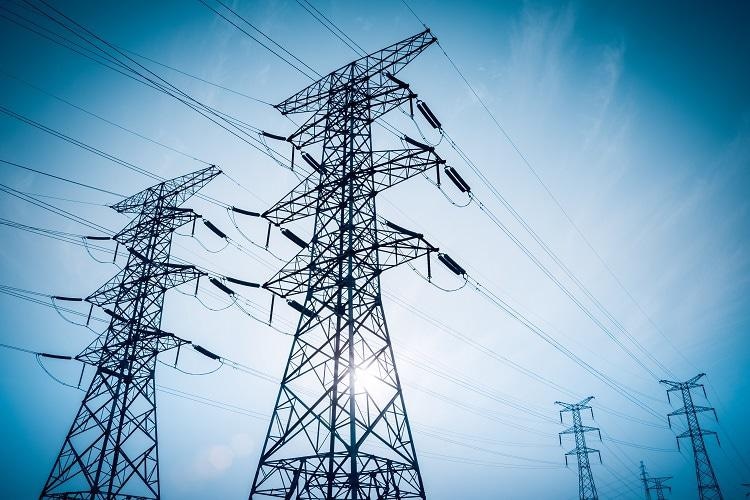 Interview conducted by Mychealla RiceSep 3 2020
Interview conducted by Mychealla RiceSep 3 2020In this interview, Steve Szymanski from Nel Hyrdogen talks to AZoM about Hydrogen Energy Storage (HES) and the applications it can be used for.
What is hydrogen energy storage (HES)?
In its simplest terms, it is storing energy in the form of hydrogen. Most commonly, when people talk about HES, they are referring to the conversion of electrical energy to hydrogen via the process of electrolysis. Also known as “power-to-gas” or P2G, the process involves using electrical energy to split water, and then capturing and storing the product hydrogen.
Once the hydrogen is stored, there are different “use cases” for the hydrogen, but often people think of energy storage like a battery. That is, they want to convert the hydrogen back to electricity, so that you are creating a “power-to-gas-to-power” (P2G2P) device.
While it is feasible to simply make hydrogen and then convert it back to electricity (like a battery), that is not always the most valuable use for the hydrogen. For example, in markets where fuel cell vehicles are available, selling the hydrogen as a transportation fuel may be the highest value end-use.
How is hydrogen stored? Are there different ways to store hydrogen? Is storing hydrogen safe?
Hydrogen is most commonly stored as a compressed gas. However, it can also be stored as a cryogenic liquid at very low temperatures. Additional methods of storing hydrogen include metal hydride materials, as well as various chemical hydrides. In these cases, the hydrogen is bonded to a solid material and can be liberated upon demand.
There are also chemicals such as liquid organic hydrogen carriers and ammonia, that can act as molecular hydrogen carriers for long distance transportation. In general, you don’t want to ship hydrogen a long distance (> 100 miles) as a gas, as it is much more cost effective to ship it as either a cryogenic liquid or other liquid carrier.
Hydrogen storage systems can be very safe, provided that good design and safety practices have been followed. As the lightest element in the universe, hydrogen dissipates very rapidly if it escapes from a storage vessel.
Other hydrocarbon fuel gases are heavier than hydrogen (and sometimes heavier than air), so they can create hazards by pooling up around the storage system and creating a flammable/explosive atmosphere. Hydrogen can also be transported over the road like any other compressed gas or cryogenic liquid.

There are many different ways to store hydrogen. The most common method is as a compressed gas. Image Credits: AnusornNakdee/shutterstock.com
What are the benefits of hydrogen energy storage? How can hydrogen storage help tackle the imbalance of the grid system?
HES can address much longer storage time scales than batteries. Solid state batteries are best suited to discharge times that are 4 hours or less. HES can address longer duration needs (say days or even weeks), simply by adding more storage tanks, thereby effectively separating power from energy. As more renewables are put on the grid, we will need a portfolio of energy storage solutions to address different time scales.
At high penetrations of Renewable Energy, seasonal storage will become important, as solar, wind, and even hydro resources can have large disparities in output from one season to the next. Hydrogen allows you to do seasonal energy shifting by simply “banking” hydrogen during seasons of surplus and then dispatching the energy during seasons of shortage. A hydrogen energy storage system can also be used as a fast response distributed energy resource for other grid balancing services such as up and down regulation and capacity markets.
Is hydrogen energy storage just for renewable energy sources?
No, hydrogen energy storage can be used for any situation where you want to store low value electrons and use them for high value applications. For example, you may want to store some off-peak grid power and then use that energy during a period of high energy consumption to reduce demand charges.
Similarly, doing some time shifting of energy on the grid may offer a deferral of costly transmission and distribution upgrades. This represents another potential business case for energy storage on the grid.

Many applications use hydrogen energy storage. Renewable energy sources is just one. Image Credits: gopixa/shutterstock.com
How is stored hydrogen converted into electricity?
Hydrogen can be converted into electricity through several different technologies. Most people consider PEM fuel cells as the preferred approach, because this is the most efficient conversion process and it is a zero-emission non-combustion approach.
This is the fuel cell technology that provides electric power in the cars, trucks, and buses that are coming to market. However, there are also combustion technologies for converting hydrogen to electricity. For example, both reciprocating engines and turbines have been developed that can burn either pure hydrogen or hydrogen rich fuel mixtures.

There are several technologies that can convert hydrogen into electricity. Image Credits: chuyuss/shutterstock.com
Are there any other uses for stored hydrogen?
Yes, the hydrogen can be used for a variety of industrial uses, including petroleum refining, steel making, and ammonia production. These industrial processes are large users of hydrogen already, and they predominantly get the hydrogen from dedicated steam methane reforming plants. This means they are also large emitters of CO2, as a byproduct of the SMR process.
As more regulations come into play, these industrial users of hydrogen will be incentivized to find lower emission sources for their process inputs. This is where hydrogen from renewable electrolysis can help to meet these emerging regulatory requirements.
What are the differences between hydrogen storage and battery storage?
Hydrogen energy storage allows you to separate power from energy, which is important when you consider how you can reasonably scale to GWhr capacities. The energy storage in an HES system is really the molecules in the tank, much like any fuel.
Battery storage can only provide a power-to-power kind of capability, whereas HES can provide many usage vectors as you are fundamentally generating and storing a fuel/chemical. HES also allows for integration with the gas grid via pipeline injection, which directly leverages existing infrastructure. Batteries do not provide an opportunity to provide a direct link between the electricity grid and the natural gas grid.

Image Credits: ImmersionImagery/shutterstock.com
What are the hydrogen energy storage systems currently being used?
There are a number of pilot projects for HES/P2G, primarily in Europe. Due to higher penetrations of renewables on their grid, utilities in Europe are actively seeking out and validating technologies that can provide grid stabilization at a large scale.
Here in the U.S. Nel Hydrogen has participated in a similar pilot project sponsored by SoCalGas, the largest gas utility in the country. The SoCalGas project showed that generating hydrogen by electrolysis in a renewable microgrid and injecting that hydrogen into an existing natural gas fired combined cycle power plant, would enable a much higher penetration of solar in the microgrid.
What does the future of hydrogen energy storage look like?
HES systems will become more common as more renewables get pushed onto the grid. The demand for the solution grows as this situation develops. So, states like Hawaii and California, with 100% renewable portfolio standard mandates will likely be early adopters of the technology, much as we have seen in Europe. There will also be an increase in off-grid HES projects in development, as curtailment of wind and solar becomes more common, PPA contracts expire, and production tax credits get phased out.
Where can people find more information about hydrogen energy storage?
The Department of Energy H2@Scale initiative is doing an excellent job of driving the agenda for grid scale hydrogen energy storage and other “P2X” applications. You can read more here: https://www.energy.gov/eere/fuelcells/h2-scale
For more information about hydrogen energy storage and power to gas please visit www.nelhydrogen.com.

About Steve Szymanski
Steve is Director of Business Development at Nel Hydrogen and has more than 28 years of technical and business development experience in the fields of process chemicals and hydrogen system solutions. In this role, Steve is responsible for developing strategic relationships and project opportunities for Government and emerging market applications for PEM and alkaline electrolysis.
In addition to managing Nel Hydrogen’s Navy submarine business activity, he also has primary market responsibility for the hydrogen fueling and renewable energy storage sectors in North America. Steve’s previous experience includes several years as an engineer in the electrochemical technology group at United Technologies. Steve has a Bachelor of Science in Chemical Engineering from Cornell University and a Master of Science in Operations Management from Rensselaer Polytechnic Institute.
Disclaimer: The views expressed here are those of the interviewee and do not necessarily represent the views of AZoM.com Limited (T/A) AZoNetwork, the owner and operator of this website. This disclaimer forms part of the Terms and Conditions of use of this website.